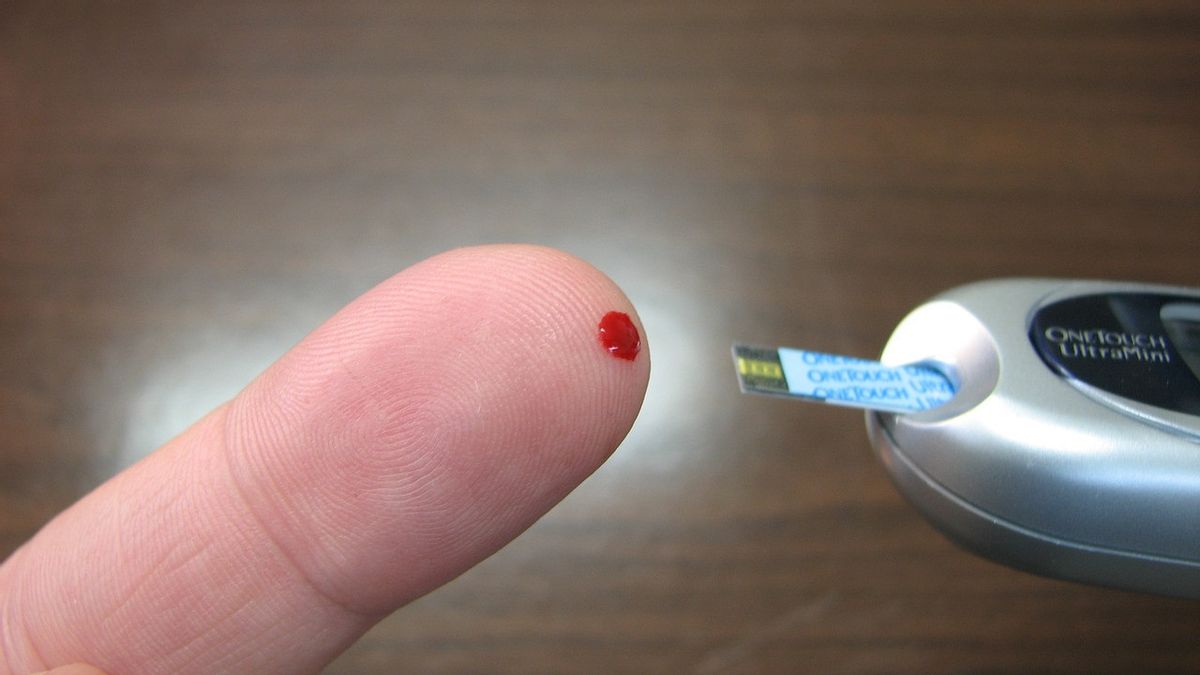JAKARTA - There are several recognizable symptoms of Type 1 Diabetes Mellitus (DM1) in children. With the right way, the growth and development of children who suffer from it can be optimized.
"Polyuria (frequent urination), polydipsia (often feeling thirsty), polyphagia (eating a lot), weight loss, and feeling weak," said Faisal Al Bukkar, a pediatrician from Padjadjaran University, as quoted by ANTARA, Saturday, July 30.
He explained, DM1 is a serious condition in which blood glucose levels rise too high because the body cannot make the hormone insulin.
This condition is caused by an autoimmune reaction, in which the body's defense system attacks the cells in the pancreas that produce insulin. As a result, the body produces little or no insulin. In addition, a person's genetic condition and the environment are also the cause of DM1.
Furthermore, this type does not look at age and is generally experienced by children or young adults. The International Diabetes Federation (IDF) Atlas 10th Edition 2021 notes that 1,211,900 children and adolescents under the age of 20 are estimated to have Type 1 Diabetes globally.
In fact, it is estimated that around 108,200 children and adolescents under 15 years of age are diagnosed each year. This number increases to 149,500 if the age range reaches under 20 years.
While in Indonesia in 2021, IDF explained that the prevalence of children and adolescents aged 0-19 years with DM1 was recorded as 8,580 children, where this number increased from 8,483 children in 2019.
In addition, dr. Faisal explained that if these symptoms are experienced by children, parents should take them directly to the doctor and ask for a blood glucose test to be done.
"The goals of treatment and management of DM1 are to prevent children from being free from disease symptoms, avoid complications, support and optimize child growth and development, and help in good metabolic control without causing hypoglycemia or low blood sugar," said dr. Faisal.
In addition to routinely controlling blood sugar so that it remains under control, parents play a role in meeting the nutritional needs of children to support their growth and development.
"Children need to get nutrition so that they get balanced nutrition. The composition of a variety of daily foods consumed, contains complete nutrients in the type and amount according to the body's needs to maintain health and ideal weight," added dr. Christin Santun Sriati Lumbantobing, M.Gizi, SpGK, FINEM, AIFO-K.
To fulfill balanced nutrition to support the growth and development of children with DM1, dr. Christin explained that it was necessary to adopt a balanced diet.
"Balance nutrition can be fulfilled when we have a balanced diet too. Starting from 50-55 percent carbohydrates, 10-15 percent protein, 30-35 percent oil or fat, and 4-5 servings of fiber from fruits and vegetables, "explained Dr. Christine.
mGanik Group Co-Founder Jessica Rukmanto said that parents need to support and assist their children in getting the right and fast treatment. It aims to assist them in undergoing health recovery and growth and development.
"We understand how the role of parents is to help the growth and development of children with DM1, in ensuring that blood glucose levels are controlled and meet balanced nutrition. Support from parents is a special spirit for children to grow and develop optimally," said Jessica.
The English, Chinese, Japanese, Arabic, and French versions are automatically generated by the AI. So there may still be inaccuracies in translating, please always see Indonesian as our main language. (system supported by DigitalSiber.id)













